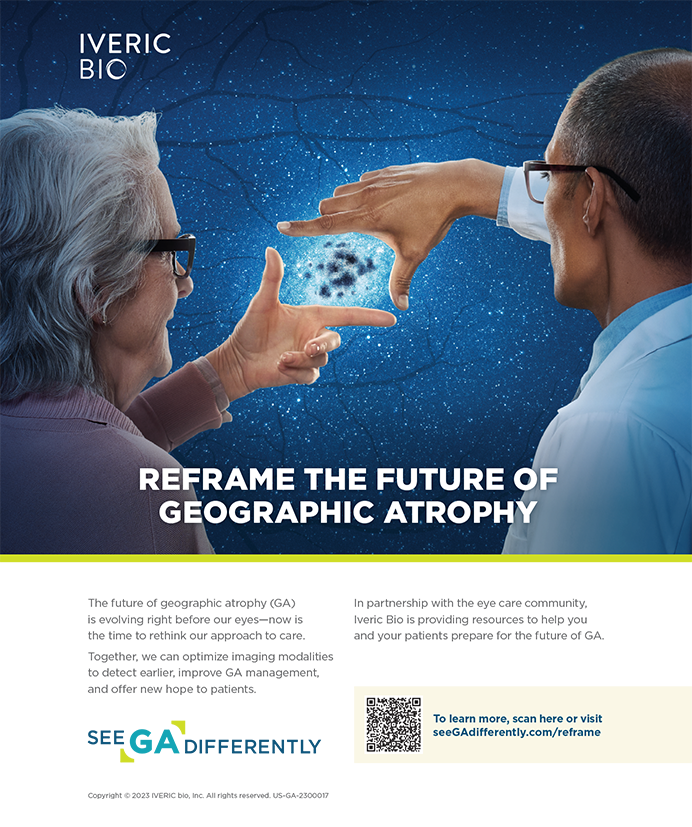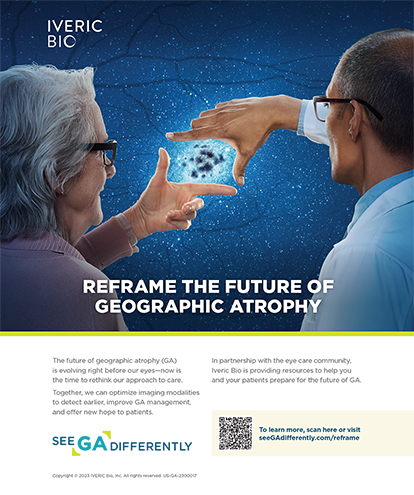| Much of Africa is mired in extreme poverty. Although the rest of the world's population has seen a steady rise in per capita income and life expectancy between 1990 and 2001, the number of people in sub-Saharan Africa existing on less than one dollar per day increased from 227 million to 313 million during the same period. In 2000, the United Nations announced its Millennium Development Goals, a series of benchmarks designed to eliminate extreme poverty. I have the privilege of working with the United Nations' Millennium Development Project to bring quality eye care to the poorest populations in Africa and examine how blindness impacts the economics of development in impoverished communities. |
| —Geoffrey Tabin, MD, Section Editor |
On a steamy July day, a four-wheel drive vehicle carrying a team of eye care professionals and volunteers lurches into a small clearing in Bonsaaso, Ghana, arguably one of the most destitute places on our planet. An aged, wizened man wrapped in a woven cloth sarong of festive yellow and green strides forward to greet us. Amoabeng, the village's chief, gently extends his bony hand with a broad smile that shows off the two large yellow teeth remaining in his jaws. A cluster of low, bun-shaped, straw huts dot the high grass surrounding the end of the deeply rutted dirt road. Thirty feet away stands a long wooden building with a tin roof, the new school built by the Millennium Villages Project. For the next week, we will use the school as a temporary clinic to examine the eyes of Bonsaaso's 5,000 inhabitants.
This article describes how Geoffrey Tabin, MD, and other members of the Himalayan Cataract Project are working with the Millennium Villages Project to improve the delivery of eye care to some of the poorest places on earth.
UNDERSTANDING POVERTY
The Millennium Villages Project is based on a single powerful idea: empowering villagers with proven, practical technologies will transform them and help them meet the goals of the United Nations' Millennium Development Project. Participants in the Millennium Villages Project work with governments and other committed stakeholders to provide affordable and science-based solutions to end extreme poverty. By investing in health, food production, education, access to clean water, and essential infrastructure, community-led interventions seek to improve conditions for the more than 1 billion people worldwide who live in the world's most destitute communities. Most of these communities currently exist on less than $1 per person per day.
The Millennium Villages Project utilizes the research produced by the Millennium Development Project (see The Millennium Villages Project) and is led by the science, policy, and planning teams at The Earth Institute, Millennium Promise, and the United Nations Development Programme.
FROM THEORY TO PRACTICE
All of the practical interventions undertaken by the Millennium Villages Project are designed to promote long-lasting economic progress. A common problem in poverty-stricken areas is poor nutrition. Providing villagers with food, or even the means to grow their own food, however, is not enough.
For example, distributing high-quality seeds and teaching agricultural methods will not be effective if there are not enough healthy men to work in the fields. Villagers cannot benefit from higher-yielding crops if they do not have access to a road to transport their excess produce to a market. Furthermore, an agricultural income will not help a community unless it uses the money to build schools and create new opportunities for children. Without these opportunities, people are likely to migrate to the nearest city as soon as they have the means.
Building a school, however, will be futile if there are no teachers or if children are unable to attend or study due to hunger, illness, or homesteading duties such as tending crops, caring for animals, and looking after family members.
The key to solving these interconnected problems is the efficient allocation of resources. This task is overseen by Jeffrey Sachs, PhD, an economist at Columbia University's Earth Institute and the founding director of the Millennium Villages Project,. He evaluates each village's overall need for development and determines how to effectively divide and deliver economic aid.
In addition to deciding how much the Millennium Villages Project needs to spend on ensuring access to clean water versus transportation or healthcare versus education, Dr. Sachs and his colleagues also struggle to allocate funds within each category. How much of the healthcare budget should be spent to prevent and treat chronic infectious diseases such as HIV, tuberculosis, and malaria? Should they dedicate more money to prenatal healthcare or childhood vaccinations?
Although eye care was not included in the Millennium Villages Project's original health manifesto, it soon became clear to the researchers that blindness had a devastating economic impact on the project's targeted populations.
Life can be harsh for blind people in subsistence communities. Not only are their life expectancies one third as long as those of age- and health-matched peers, but these individuals require extra care from a family member who otherwise could contribute to the community's work force. Recognizing a need for better eye care, the Millennium Villages Project enlisted the Himalayan Cataract Project to determine the economic and human costs of blindness and develop efficient means of restoring sight to individuals in disadvantaged communities. We hope to show that the benefits of delivering eye care to the poorest places on earth far outweigh the costs.
OUTREACH EFFORTS
The Himalayan Cataract Project's first eye care intervention for the Millennium Villages Project took place in Bonsaaso, a village in the northern Ashanti region of Ghana, in July 2007. This community was a natural choice for an initial effort because of our organization's relationship with the Komfo Anokye Teaching Hospital (KATH) in Kumasi, the capital of Ashanti, Ghana, through the University of Utah's John A. Moran Eye Center in Salt Lake City. Dr. Tabin's partner at the Moran Eye Center, Alan Crandall, MD, has been performing cataract surgery in Kumasi for the past 12 years. We also counted on the assistance of Seth Lartey, MD, and two ophthalmic nurses who had previously been trained to perform high-volume, sutureless, extracapsular cataract surgery at the Himalayan Cataract Project's Tilganga Eye Centre in Kathmandu, Nepal. For the past several years, Dr. Lartey and the nurses had been working to develop subspecialty eye care and a full residency program at KATH as well as a childhood blindness prevention program for the Ashanti region of Ghana.
After teaching in Kumasi last April, Dr. Tabin took his first kidney-jarring jeep ride to Bonsaaso to meet the village chief and plan for the upcoming intervention. He planned to examine the eyes of everyone in the village and immediately provide medications or spectacles to anyone who needed them. Because the village did not have a building with a wooden or concrete floor or access to clean, running water, he decided against performing cataract surgery in Bonsaaso. The eye care team would instead transport everyone who had advanced cataracts or trichiasis to a Catholic mission hospital in Agroyesum, Ghana. Dr. Tabin and his colleagues chose this location because it was the closest outpost accessible by road from Bonsaaso and only a 3 hours' drive from Kumasi.
The eye care team also planned to provide free cataract surgery to any of the 35,000 people from the surrounding villages who needed the procedure. Dr. Tabin arranged for an ophthalmic nurse stationed in Agroyesum to coordinate outreach in nearby communities and to help the doctors from Kumasi prescreen patients.
Dr. Sachs and his economic team will now carefully examine the costs of the ophthalmic interventions in Bonsaaso and Agroyesum and calculate how much money will be needed to provide ongoing eye care after the initial outreach effort. Their analysis will include the cost of establishing a reliable infrastructure and will also measure the effect of sight-restoring treatments on the community's development.
We hope to use a system similar to the one employed in Bonsaaso in all future eye care interventions performed as part of the Millennium Villages Project. Every village will have a local coordinator and a trained healthcare worker who performs basic eye examinations and dispenses antibiotics as needed. A trained ophthalmic nurse will be responsible for a cluster of villages comprising approximately 35,000 people. This nurse will provide basic eye care, treat minor injuries and infections, and perform refractions as well as refer patients who need cataract surgery and other procedures to qualified doctors. The goal will be to train a high-quality cataract surgeon to serve every 200,000 people and establish a tertiary eye care facility for every million.
THE MILLENNIUM VILLAGES PROJECT IN ACTION
On July 20, 2007, the Millennium Villages Projects' eye care team assembled in Kumasi. Dr. Tabin was accompanied by two of his colleagues from Utah: Paul S. Bernstein, MD, a retina specialist who would document posterior segment pathologies, and Huckleberry A. Holz, MD, corneal fellow from the Moran Eye Center. They were joined by Dr. Lartey from Kumasi, Amos Aikins, one of Dr. Lartey's chief residents, ophthalmic nurses from Nepal and Kumasi, and Dr. Tabin's daughter Emilia, who would help with record keeping. Dr. Tabin's friend Michael Lewis, MD, an orthopedic surgeon, served as the team's official photographer. Additional support was provided by staff members from the Millennium Villages Project and a cadre of young volunteers and interpreters.
After the team set up their makeshift clinic in Bonsaaso's school, they began using a tumbling E chart to check the vision of everyone in the village (Figure 1). Anyone who was found to have an UCVA of at 20/40 or worse was given a thorough refraction. Presbyopes received reading glasses, and individuals who had lost vision or who had pathologies and other ocular concerns received a full dilated fundus examination.
After determining which patients needed immediate treatment, the team transported the 336 surgical candidates to Agroyesum. Over the next 5 days, surgeons restored the vision of many joyous patients who never expected to regain their sight (Figures 2 and 3), and our retinal specialist examined the fundus of all patients with posterior segment disease.
The few problems we encountered—breakdowns in the record-keeping system and too few interpreters for the number of patients—did not affect the quality of our medical care. These variables, however, and the mixing of patient records from Bonsaaso and other villages, made it difficult for us to ascertain the exact cost per person of bringing quality eye care to this part of Ghana. Nonetheless, the Millennium Villages Project's intervention in Bonsaaso was an important step toward investigating the economic cost and benefits of restoring sight in remote areas of Africa.
FUTURE PLANS
In May 2008, Dr. Tabin, an eye care team of Ethiopian ophthalmologists and ophthalmic nurses, two ophthalmic assistants from Nepal, and an additional ophthalmologist, medical student, and medical economist from the US will conduct an intervention in the Millennium Village of Koraro, Ethiopia. Within the next 2 years the Himalayan Cataract Project plans to reach all 12 of the Millennium Villages in Africa and amass enough hard data to show that the costs of necessary eye care can be accommodated by the complex health budgets of developing countries. We hope that our efforts will substantially increase funding for developing ophthalmic programs around the world.
Partners of the Millennium Villages Project include The Earth Institute at Columbia University, Millennium Promise, and the United Nations Development Programme.
Geoffrey Tabin, MD, is Professor of Ophthalmology and Visual Sciences and Director of International Ophthalmology at the John A. Moran Eye Center at the University of Utah in Salt Lake City. He is also Co-Director of the Himalayan Cataract Project. Dr. Tabin may be reached at (801) 581-2352; geoffrey.tabin@hsc.utah.edu or cureblindness@hotmail.com.
Emily R. Newick, MPH, is Executive Director of the Himalayan Cataract Project. She may be reached at (802) 522-9976; enewick@cureblindness.org.


